Learning How to Use Buttons, Snaps, Zippers, and Buckles Through Play
Affiliate and Referral links are used below to promote products I love and recommend. I receive a commission on any purchases made through these links. Please see my disclosure policy for more details. As an Amazon Associate, I earn from qualifying purchases.
One of the more challenging skills to learn as far as fine motor skills are concerned is something most of us probably do daily. For children, learning how to use buttons, snaps, zippers, and buckles can be a huge learning curve. But that is where learning through play can be a huge help to them.
Learning How to Use Buttons, Snaps, Zippers, and Buckles Through Play
In the Montessori method that I also use with my children, these activities are often referred to as practical life skills. In Occupational Therapy we refer to them as Activities of Daily Living or ADLs. They really both mean the same thing.
There are so many great ways to encourage the skills needed for using buttons, snaps, zippers, and buckles in just everyday fun activities. It doesn't even need to be an activity that uses any of these items, as long as you are encouraging the use of specific skills children need in order to develop these important care of self skills.
So what skills does your child need in order to learn how to use buttons, snaps, zippers, or buckles?
- Bilateral Coordination (using both sides of the body, or in this case hands, together)
- Visual-Motor Skills (includes visual discrimination, eye-hand coordination, and tracking)
- Fine motor skills (specifically finger dexterity, pincer grasp,
- Motor Planning (being able to complete the activity from beginning to end in the correct sequence)
Any type of play activity that works with the skills above will help your child master these important activities of daily living (or practical life) skills.
Here are some fun ideas for each to get you started.
Play Activities to Work on Activities of Daily Living
These are some fun play or activity ideas that will help to improve all the skills needed for learning how to button, snap, zip, and buckle.
- Stringing beads (small, medium, or large beads depending on your child's age)
- Using scissors (holding the scissors with one hand, holding the paper with the other)
- Lacing cards
- Pealing Stickers
- Thread buttons
- Use clothes pins to pick up objects
- Use fine motor tweezers or tongs
- Use a hole punch to cut out designs
- Make a button snake (links to tutorials below)
There are also many fun products out there that can encourage your child to practice these ADLs. Some of them include:
- Basic Life Skills Learning to Dress Boards
- Nuts and Bolts Set
- Blast Off Zipper Trainer
- Mosaic Pegboards
- Basic Skills Board
- Egg and Spoon Game
Here are some fun activities from other bloggers:
- Zipper Activity from Sugar Aunts
- DIY Dressing Frames from Living Montessori Now
- Button Snake with Lots of Buttons from Therapy Fun Zone
- DIY Toddler Buckle Toy from Swoodson Says
- DIY Wooden Snap Blocks from I Can Teach My Child
Be sure to check out all the other blog posts in this month's Functional Skills for Kids series on buttons, snaps, zippers, and buckles.
Clothing Fasteners and Gross Motor Skill Development | Your Therapy Source Inc
How to Adapt Buttoning and Zipping for Your Child | Miss Jaime OT
Learning How To Use Buttons, Snaps, Zippers, and Buckles Through Play | Growing Hands-On Kids
Tips to Teach Kids to Zip and Button | The Inspired Treehouse
Clothing Fasteners and Sensory Processing | Sugar Aunts
You May Also Like:

Heather Greutman, COTA
Heather Greutman is a Certified Occupational Therapy Assistant with experience in school-based OT services for preschool through high school. She uses her background to share child development tips, tools, and strategies for parents, educators, and therapists. She is the author of many ebooks including The Basics of Fine Motor Skills, and Basics of Pre-Writing Skills, and co-author of Sensory Processing Explained: A Handbook for Parents and Educators.

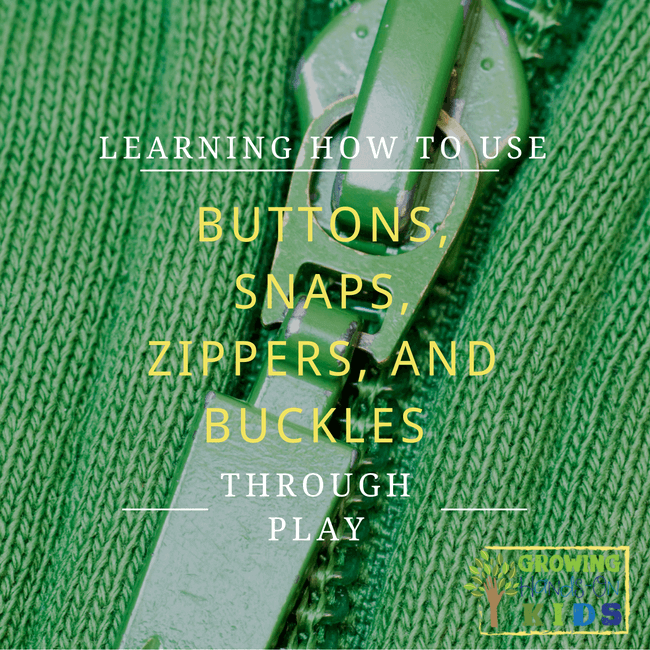
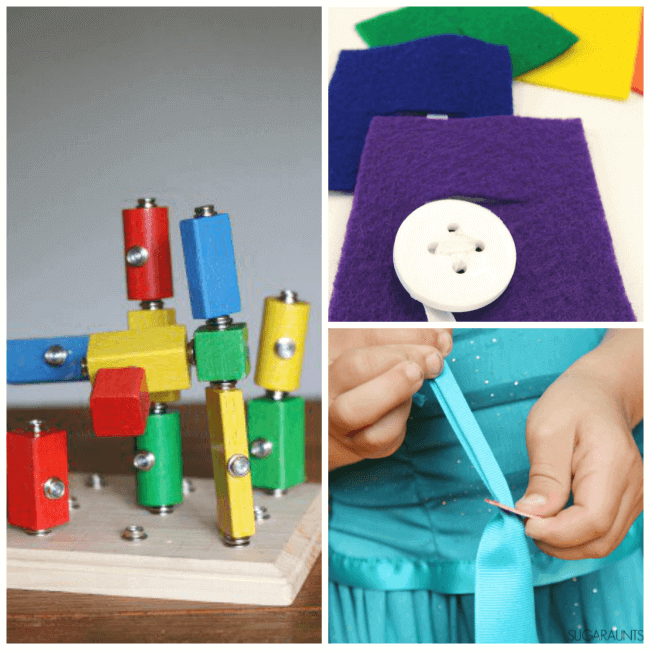
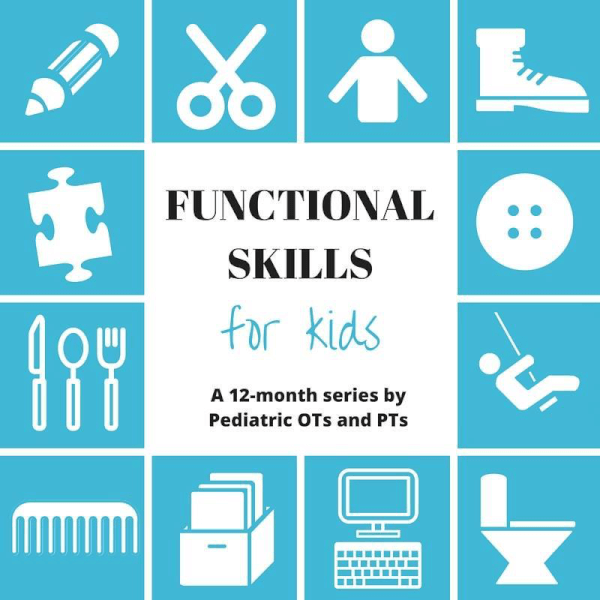
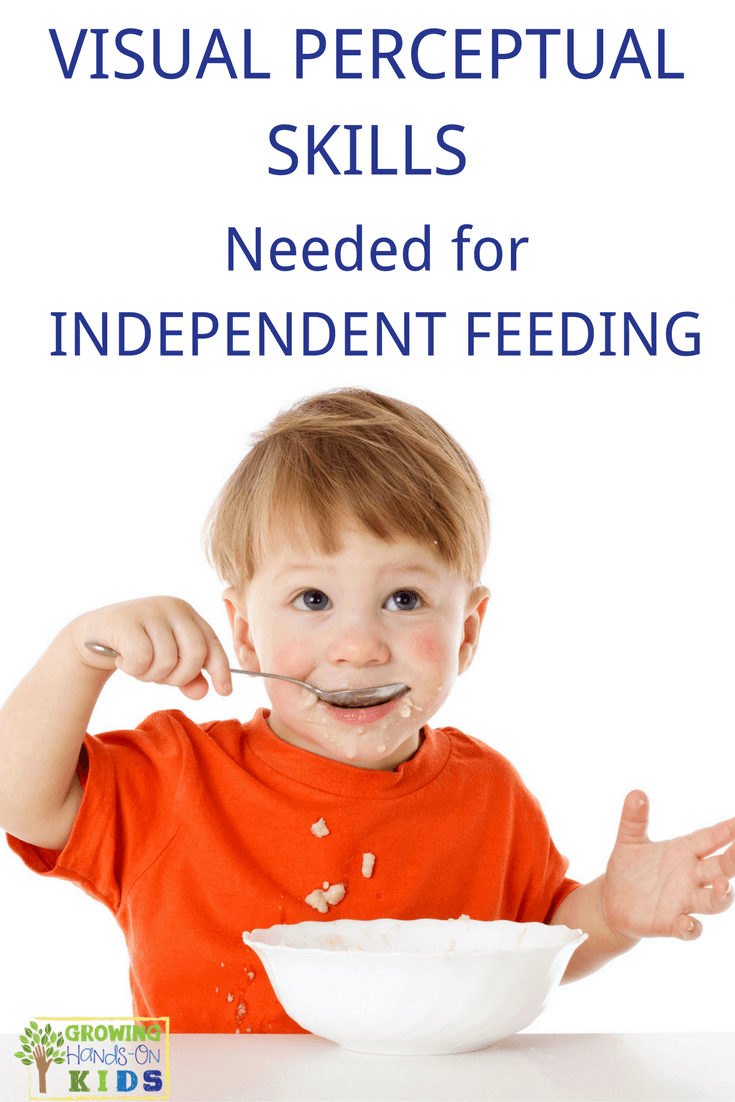
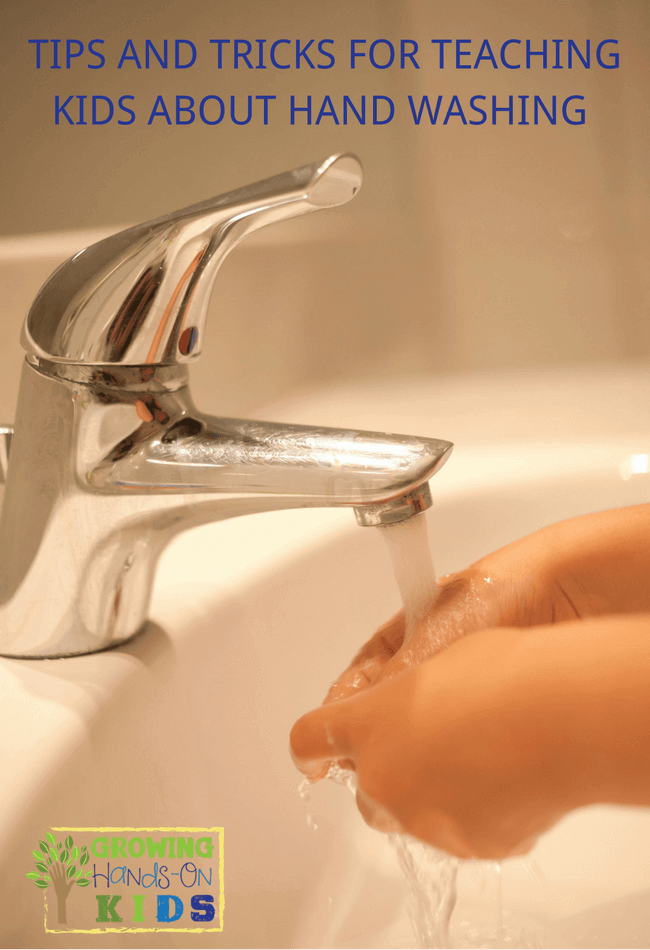

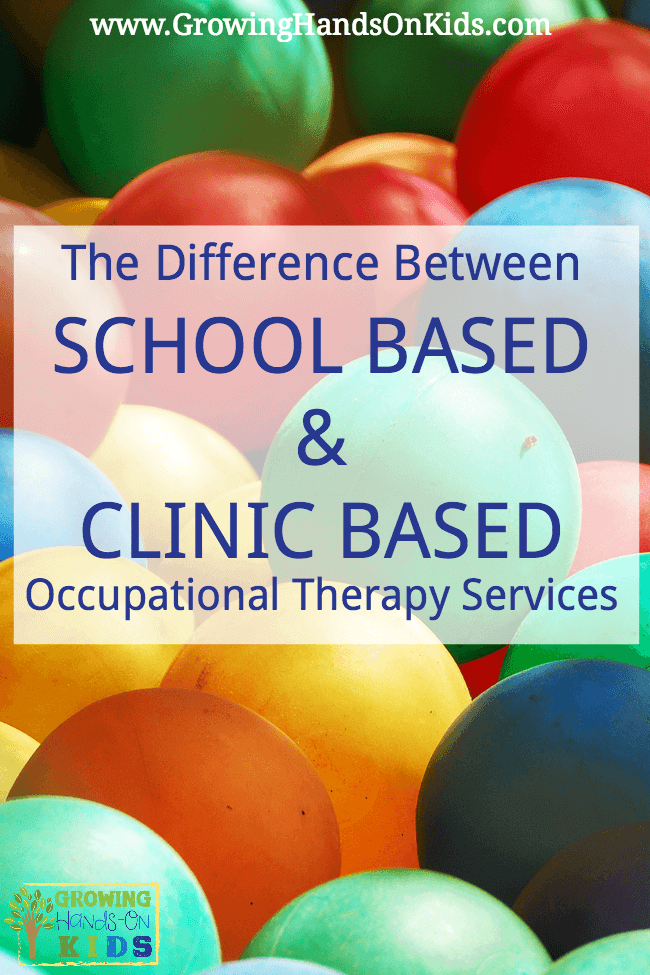
I definitely find that the “bilateral” component of fastenings the hardest aspect for kids to learn. Lots of great suggested play activities here!
I love how you tied in bilateral coordination toys and hand strengthening activities. These are so important in developing the foundational skills for learning to dress. Will be sharing!
Thanks for linking my buckle toy!
You’re welcome! 🙂
Great ideas! I love the button snake – classic and the kids enjoy it for sure! Here is another suggestion – the button board https://www.yourtherapysource.com/videobutton.html